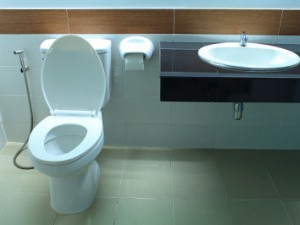
According to APIC.org, a pivotal study in the American Journal of Infection Control (AJIC) reveals that disinfecting toilets is significantly more effective in preventing viral spread on restroom surfaces than simply closing toilet lids. This research, undertaken by experts from the University of Arizona and Reckitt Benckiser, demonstrates that viral particles are dispersed during flushing, regardless of the position of the toilet lid.
The study found that the aerosol plume generated by flushing can contaminate various surfaces, with or without the lid being closed. Using a nonpathogenic virus as a stand-in, the researchers evaluated contamination levels in both household and public toilets. They discovered that the toilet seat was consistently the most contaminated area, and that closing the lid did not notably reduce viral dispersion.
A critical finding of the research was the effectiveness of cleaning methods. While cleaning solely with a brush left considerable viral contamination, the use of disinfectant substantially reduced the presence of viruses. Importantly, the study indicated that introducing disinfectant before flushing or in the toilet tank was highly effective in minimizing contamination.
Dr. Charles P. Gerba, the study’s senior author, emphasized the implications of these findings for healthcare environments. “In healthcare settings, any potential means of pathogen transmission must be addressed to keep all of our patients—including the most vulnerable, such as immunocompromised individuals—as healthy as possible,” he said. This underscores the critical need for regular toilet disinfection to prevent virus proliferation. The study also demonstrated that disinfecting with a brush could diminish viral contamination on toilets by over 99.99% and on brushes by 97.64%.
Dr. Tania Bubb, 2024 APIC president, discussed the broader implications of the study, noting, “This study helps establish a clearer understanding of how pathogens spread and the measures we can take to break those chains of transmission.” She highlighted the vital role of routine surface disinfection in healthcare settings for curbing the spread of viral infections.
These findings are not only pivotal for healthcare settings but also have implications for household hygiene practices, especially when a family member is sick. Regularly incorporating a disinfectant in cleaning routines or before flushing can be effective in controlling the spread of infections within a home.
This article first appeared in the Cleaning & Maintenance Management online publication.
Comment below to have your say on this story.
If you have a news story or tip-off, get in touch at editor@incleanmag.com.au
Sign up to INCLEAN’s newsletter.



